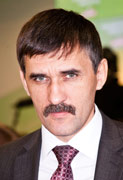  
| |||
|
| Current issue About edition Editorial board To authors Subscription Our authors Files |
|
September 2025, № 3 (247), pages 36-40doi: 10.25198/1814-6457-247-36Churkina N.I. 1. Bakhtina O.N., Syrova V.N. and Dutchak E.E. (eds.) (2009) The “Slavic World” of Siberia: New Approaches to the Study of the Processes of Development of Northern Asia: Collective Monograph. Tomsk: Tomsk University Press, 218 p. 2. Dimke D. V. (2014) “Be Worthy of the Memory of the Fallen”: Practices of Building a Personality in Utopian Communities. Sociology of Power, No. 4, pp. 97-116. 3. Ivanov I.P. (1972) Creative Community of Generations as a Condition for the Education of Young Social Activists. Doctor thesis. Leningrad, 40 p. 4. Ivanov I.P. (1955) Educational work of Komsomol members with pioneers in secondary school. PhD thesis. Leningrad. 25 p. 5. Kazakina M.G. (1967) Formation of moral ideals in adolescents in the process of social activity. PhD thesis. Leningrad. 23 p. 6. Kazakina M.G. (1988) Lifestyle – commune. Uchitelskaya gazeta. January 23. 7. Krapivina L.A. (2013) Pioneer detachment “Karavella”: a look through the prism of the fiftieth anniversary. Municipal formation: innovations and experiment, No. 4, pp. 55-61. 8. Kupriyanov B.V. (2023) The space of education of Soviet schoolchildren in the pioneer camp of the Central Committee of the All-Union Leninist Young Communist League “Orlyonok” 1962-1966. Journal of psychological and pedagogical research, No. 3, pp. 21-32. 9. Kupriyanov B.V. (2017) Provincial reserves of non-litarian pedagogy (regional camps of the Komsomol activists in the USSR in the 60-70s of the twentieth century). Bulletin of the Kostroma State University. Series: Pedagogy. Psychology. Sociokinetics, No. 4, pp. 223-228. 10. Lutoshkin A.N. (1986) How to Lead: For High School Students on the Basics of Organizational Work. 3rd ed., revised and enlarged. M.: Education, 208 p. 11. Mannheim K. (2010) Selected. Diagnosis of Our Time. M.: Publishing House “RAO “Talking Book”, 744 p. 12. Mudrik A.V. (2016) Faces of Domestic Pedagogy of the Soviet Period (Notes of an Amateur). Social Pedagogy, No. 1-2, pp. 66–84. 13. Nazaretyan A.P. (n.d.) Synergetics in the Humanities: Preliminary Results. URL: https://ecsocman.hse.ru/data/076/291/1218/009Nazaretyan.pdf (date accessed: 22.06.2025). 14. Oldenburg R. (2018) Third place: cafes, coffee shops, bookstores, bars, beauty salons and other places of “parties” as the foundation of community. M. “New Literary Review”, 456 p. 15. Uhl K. (2011) Generation between the “heroic past” and the “bright future”: the role of youth during the “thaw”. Anthropological forum. No. 15. pp. 279-326. About this articleAuthor: Churkina N.I.Year: 2025 doi: 10.25198/1814-6457-247-36 |
|
||||||||||||
| Current issue About edition Editorial board To authors Subscription Our authors Files |
|
© Электронное периодическое издание: ВЕСТНИК ОГУ on-line (VESTNIK OSU on-line), ISSN on-line 1814-6465 Зарегистрировано в Федеральной службе по надзору в сфере связи, информационных технологий и массовых коммуникаций Свидетельство о регистрации СМИ: Эл № ФС77-37678 от 29 сентября 2009 г. Учредитель: Оренбургский государственный университет (ОГУ) Главный редактор: С.А. Мирошников Адрес редакции: 460018, г. Оренбург, проспект Победы, д. 13, к. 2335 Тел./факс: (3532)37-27-78 E-mail: vestnik@mail.osu.ru |
1999–2025 © CIT OSU |















